Incumbent MPs
- Kim Booth (GRN), since 2002.
- Michael Ferguson (LIB), since 2010. Previously federal Member for Bass 2004-2007.
- Peter Gutwein (LIB), since 2002.
- Michelle O’Byrne (ALP), since 2006. Previously federal Member for Bass 1998-2004.
- Brian Wightman (ALP), since 2010.
Geography
Bass covers the north-eastern corner of Tasmania. It covers the LGAs of Launceston, George Town and Dorset, along with small parts of West Tamar and Meander Valley LGAs to the west of Launceston. Bass also covers Tasmania’s north-eastern islands, including Flinders Island.
History
Bass was first created as a state electorate in 1909, when Tasmania moved to a system of proportional representation with each district electing six members. Bass has always had the same boundaries as the federal electorate of the same name.
At the 1909 election, the Anti-Socialists won three seats, the ALP two and one seat went to the “Liberal Democrats” party. The ALP and the Liberals won three seats each at the 1912, 1913 and 1916 elections.
The Nationalists won a 4-2 majority in 1919, although one of those four seats was lost to an independent in 1922.
The ALP and Nationalists maintained a 3-3 split at the 1925, 1928 and 1934 elections, with the Nationalists gaining a 4-2 majority in 1931.
The ALP won a majority in Bass for the first time in 1937, maintaining it until a 3-3 split was restored in 1948. Bass continued to elect even numbers of Liberals and Labor MPs from 1948 until 1959, when an expanded House of Assembly saw Bass elect a seventh seat, which went to an independent.
After the ALP and Liberals won three seats each at each election, the seventh Bass seat was traded back and forth from 1964 to 1986, with the ALP winning in 1964, 1972 and 1979, and the Liberals winning in 1969, 1976, 1982 and 1986.
Green independent Lance Armstrong won the seventh seat in 1989, and retained it in 1992, when the Liberals won a fourth seat off the ALP, who were reduced to two seats.
The ALP regained their third seat in 1996 at the expense of Armstrong, producing a 4-3 split favouring the Liberals.
The reduction of seats at the 1998 election hit the Liberal Party hard, who lost two of their four seats, while the ALP retained their three seats. The ALP lost one of those three seats to Kim Booth in 2002.
The 2-2-1 split was retained at the 2006 election, although former federal MP Michelle O’Byrne topped the poll and helped engineer the only pro-Labor swing in the state, almost defeating Booth, who won the final seat by a 136-vote margin over Labor candidate Steve Reissig.
Bass was the only electorate to maintain the party ratio in 2010, with 2 Labor, 2 Liberal and 1 Greens. Every other electorate shifted to the same proportion as Bass.
Sitting Labor MP Jim Cox and Liberal MP Sue Napier both retired. The poll was topped by former federal Liberal MP Michael Ferguson. For the second election in a row, a federal MP who had been defeated at the last federal election switched to state politics and topped the poll. Along with Michael Ferguson, the other open seat went to the ALP’s Brian Wightman.
Candidates
- Australian Christians – Group A
- Ray Kroeze
- Australian Labor Party – Group B
- Andrew Connor
- Adam Gore
- Senka Mujkic
- Michelle O’Byrne*
- Brian Wightman*
- Palmer United Party – Group C
- Chris Dobson
- Brian Gunst
- Mark Hines
- Tim Parish
- Liberal Party – Group D
- Sarah Courtney
- Michael Ferguson*
- Peter Gutwein*
- Barry Jarvis
- Leonie McNair
- Tasmanian Greens – Group E
- Kim Booth*
- Andrea Dawkins
- Anne Layton-Bennett
- Anna Povey
- Amy Tyler
- Ungrouped independents
- Brett Lucas
- Andrew Roberts
Assessment
The Liberal Party will be hoping to gain a third seat in Bass, either at the expense of the single Greens MP or one of the two Labor MPs.
2006 result
| Candidate | Votes | % | Quota |
| Michelle Cripps | 1,627 | 2.55 | 0.15 |
| Scott Mclean | 3,090 | 4.85 | 0.29 |
| Michelle O’Byrne | 11,380 | 17.87 | 1.07 |
| Brant Webb | 2,699 | 4.24 | 0.25 |
| Brian Wightman | 3,191 | 5.01 | 0.30 |
| Australian Labor Party | 21,987 | 34.52 | 2.07 |
| Jeremy Ball | 2,226 | 3.49 | 0.21 |
| Kim Booth | 8,853 | 13.90 | 0.83 |
| Sally Day | 675 | 1.06 | 0.06 |
| Bev Ernst | 380 | 0.60 | 0.04 |
| Peter Stuart Whish-Wilson | 1,209 | 1.90 | 0.11 |
| Tasmanian Greens | 13,343 | 20.95 | 1.26 |
| Pamela Agnes Dakin | 413 | 0.65 | 0.04 |
| Michael Ferguson | 15,911 | 24.98 | 1.50 |
| Peter Gutwein | 9,060 | 14.22 | 0.85 |
| Michele Colette Mcginity | 1,244 | 1.95 | 0.12 |
| Nick Pedley | 536 | 0.84 | 0.05 |
| Liberal Party | 27,164 | 42.64 | 2.56 |
| Jim Collier | 162 | 0.25 | 0.02 |
| Peter Kaye | 279 | 0.44 | 0.03 |
| Tim Parish | 484 | 0.76 | 0.05 |
| Mark Webb | 158 | 0.25 | 0.01 |
| Sven Wiener | 121 | 0.19 | 0.01 |
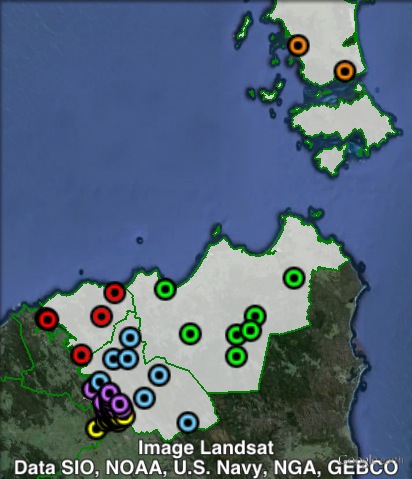
Booth breakdown
Bass covers part or all of four local council areas. Most of the population lies in Launceston local government area. These booths have been split into Rural, North and South. The vast majority of voters live in the Launceston urban area.
The remaining booths have been split along local government boundaries: Dorset, George Town and Flinders Island.
The Liberal Party topped the poll across the electorate including five out of six areas. The Liberal vote ranged from 59% in Dorset to just under 30% in George Town. The ALP’s vote followed the opposite trend, ranging from 27.8% in Dorset to 48.4% in George Town. The Greens vote ranged from 11.9% in Dorset to 31.5% in Launceston Rural. The Greens outpolled the ALP in Launceston Rural and Flinders Island.
| Voter group | LIB % | ALP % | GRN % | Total votes | % of votes |
| Launceston South | 45.85 | 32.52 | 19.99 | 21,616 | 33.94 |
| Launceston North | 38.11 | 37.04 | 23.07 | 20,104 | 31.56 |
| Dorset | 59.32 | 27.83 | 11.88 | 4,024 | 6.32 |
| George Town | 29.56 | 48.40 | 17.20 | 3,349 | 5.26 |
| Launceston Rural | 37.38 | 28.85 | 31.53 | 2,239 | 3.52 |
| Flinders Island | 54.10 | 21.55 | 22.95 | 427 | 0.67 |
| Other votes | 43.11 | 33.78 | 21.17 | 11,939 | 18.74 |
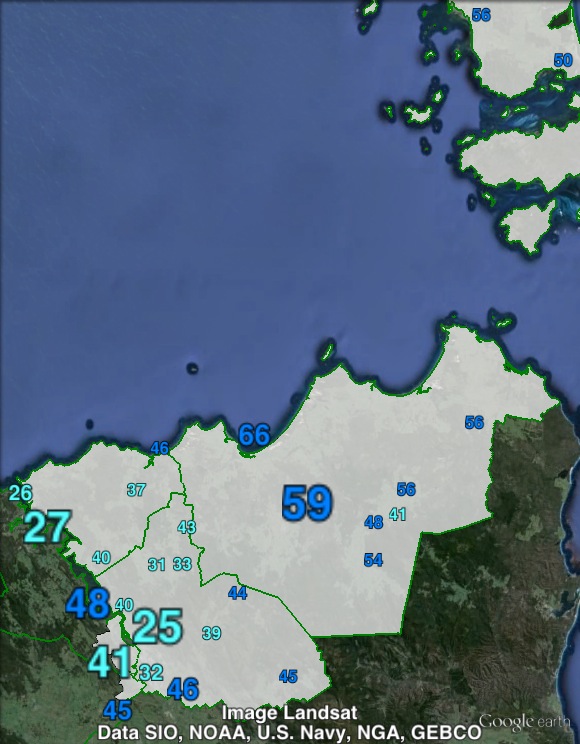
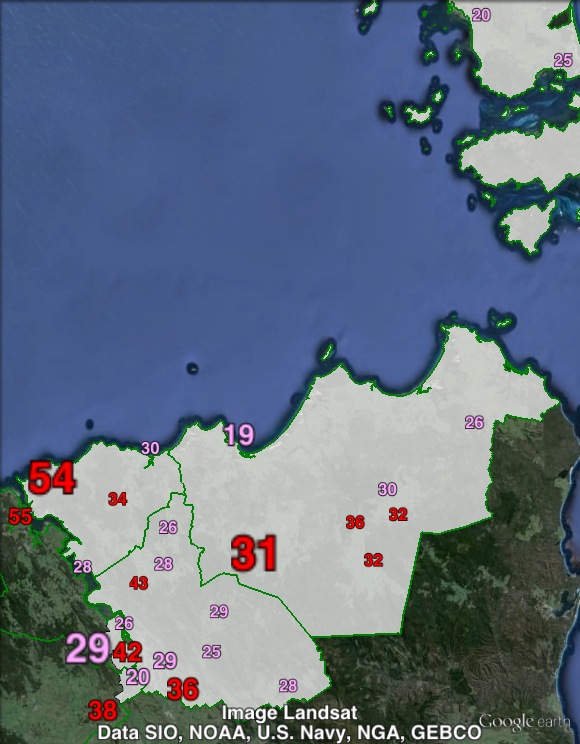
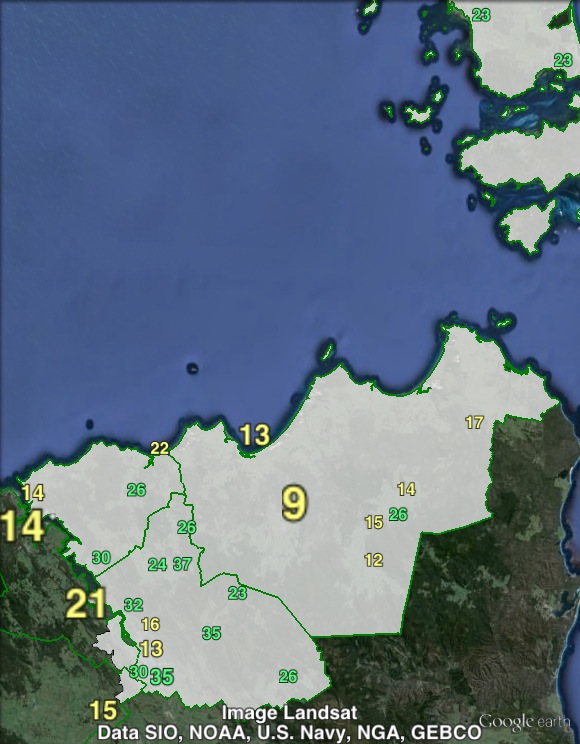
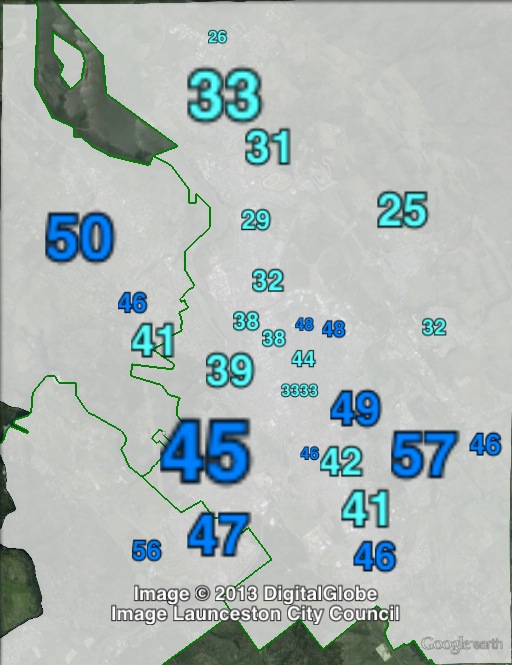
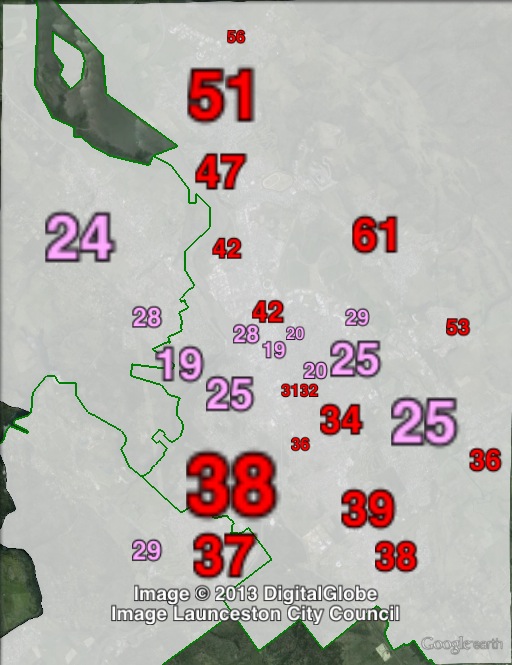
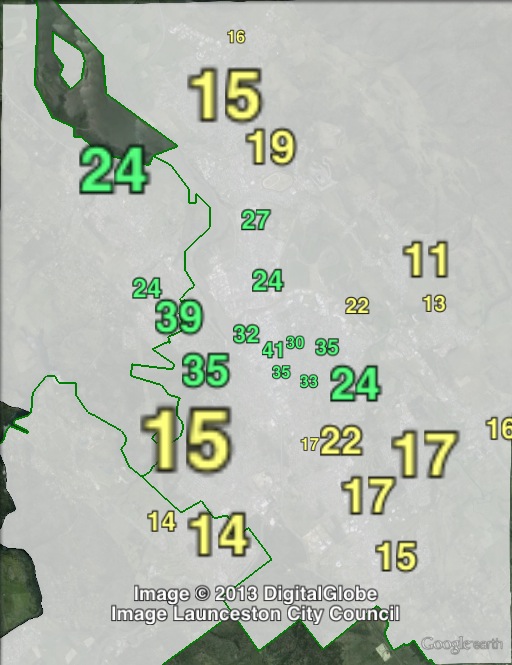


The ALP will also be running Andrew Connor (current Meander Valley Councillor, Digital Tasmania co-founder).
I think that the Liberals will take a seat from Labor.